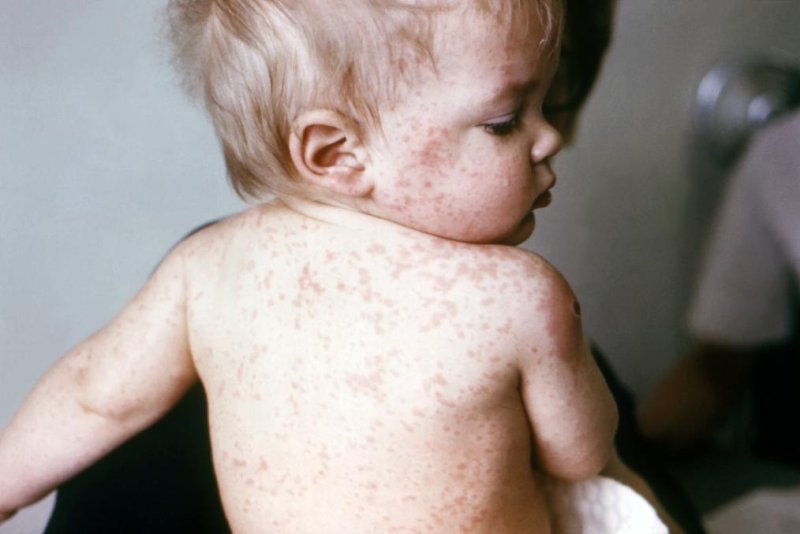A child with the measles. Photo by CDC
LOS ANGELES, March 16 (UPI) -- A new study suggests low vaccination rates are at least partially to blame for the measles outbreak that officials traced to Disneyland in Southern California late last year.
Compared to other types of vaccines, measles vaccination is quite popular. Roughly 93 percent of children are properly vaccinated against the infectious virus. But fueled by the anti-vaccination movement in the U.S., pockets of unvaccinated children have been growing in recent years. What's more, the measles virus is so contagious that even 92 percent isn't high enough to prevent outbreaks.
Researchers say the communities that spawned the latest outbreak, as well as those that were exposed to and spread the outbreak, were likely vaccinated at substandard rates.
"Substandard vaccination means that less than 96 to 99 percent of the population exposed to measles during the course of the outbreak were vaccinated," lead study author Maimuna Majumder, a research fellow at Boston Children's Hospital, told HealthDay.
"In our study, we found that MMR vaccination rates among the exposed population [in the outbreak] may be as low as 50 percent and likely no higher than 86 percent," she said.
The researchers used complex mathematical models to account for the virus's rapid spread among Disneyland visitors. Pockets of under-vaccinated children is the only statistically viable explanation for the virus's high rate of proliferation.
Measles is initially characterized by high fever, cough and runny nose, which is usually followed by red rash -- beginning first on the face, and quickly spreading over the entire body.
In the study, published this week in the journal JAMA, researchers warn that the ongoing outbreak "shines a glaring spotlight on our nation's growing antivaccination movement and the prevalence of vaccination-hestitant parents."
Since the Southern California outbreak emerged in December, at least 133 infections have been reported across 8 states.















